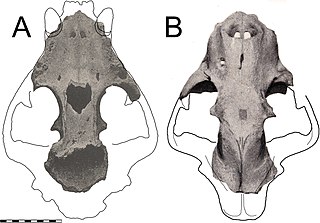Awards
| | This section is empty. You can help by adding to it. (August 2010) |
| |||
|---|---|---|---|
| +... |
Below are notable events in archaeology that occurred in 1941 .
| | This section is empty. You can help by adding to it. (August 2010) |

Father Alberto Maria de Agostini born in Pollone, Piedmont was an Italian missionary of the Salesians of Don Bosco order as well as a passionate mountaineer, explorer, geographer, ethnographer, photographer and cinematographer.

Mount Hudson is a stratovolcano in southern Chile, and the site of one of the largest eruptions in the twentieth century. The mountain itself is covered by a glacier. There is a caldera at the summit from an ancient eruption; modern volcanic activity comes from inside the caldera. Mount Hudson is named after Francisco Hudson, a 19th-century Chilean Navy hydrographer.
The year 1972 in archaeology involved some significant events.
The year 1963 in archaeology involved some significant events.
The year 1964 in archaeology involved some significant events.
Below are notable events in archaeology that occurred in 1928.

Cueva de las Manos is a cave and complex of rock art sites in the province of Santa Cruz, Argentina, 163 km (101 mi) south of the town of Perito Moreno. It is named for the hundreds of paintings of hands stenciled, in multiple collages, on the rock walls. The art was created in several waves between 7,300 BC and 700 AD, during the Archaic period of pre-Columbian South America. The age of the paintings was calculated from the remains of bone pipes used for spraying the paint on the wall of the cave to create the artwork, radiocarbon dating of the artwork, and stratigraphic dating.

The Pinturas River Canyon is a canyon located 160 km from the town of Perito Moreno in Santa Cruz, Argentina. It is home to the Pinturas River, which carved the canyon through eroding the Chon Aike Formation. Native populations inhabited the region, painting many works of rock art, some of which can still be seen today. The most famous of these rock art sites is the Cueva de las Manos, a cave site with ancient art whose creation dates back up to 13,000 years ago. This rock art, and Cueva de las Manos in particular, brings lots of tourism to the canyon.
The year 1955 in archaeology involved some significant events.

The Pinturas River is a river in Patagonia, Argentina, running through the Pinturas River Canyon, near the Cueva de las Manos archeological site. The river's main tributary is the Ecker River. The Pinturas River itself is a tributary of the Deseado River.

Archaeology or archeology is the study of human activity through the recovery and analysis of material culture. The archaeological record consists of artifacts, architecture, biofacts or ecofacts, sites, and cultural landscapes. Archaeology can be considered both a social science and a branch of the humanities. It is usually considered an independent academic discipline, but may also be classified as part of anthropology, history or geography.

Cueva Fell or Fell'sCave is a natural cave and archaeological site in southern Patagonia. Cueva Fell is in proximity to the Pali Aike Crater, another significant archaeological site. Cueva Fell combined with the nearby Pali Aike site have been submitted to UNESCO as a possible World Heritage Site.

Panthera onca mesembrina is an extinct subspecies of jaguar that was endemic to Patagonia in southern South America during the late Pleistocene epoch. It is known from several fragmentary specimens, the first of which found was in 1899 at "Cueva del Milodon" in Chile. These fossils were referred to a new genus and species "Iemish listai" by naturalist Santiago Roth, who thought they might be the bones of the mythological iemisch of Tehuelche folklore. A later expedition recovered more bones, including the skull of a large male that was described in detail by Angel Cabrera in 1934. Cabrera created a new name for the giant felid remains, Panthera onca mesembrina, after realizing that its fossils were near-identical to modern jaguars’. P. onca mesembrina's validity is disputed, with some paleontologists suggesting that it is a synonym of Panthera atrox.
Perito Moreno is a town in the northwest of Santa Cruz Province, Argentina, 25 km east of Lake Buenos Aires. It should not be confused with the Perito Moreno National Park over 300 km south by road, or the Perito Moreno Glacier near El Calafate. The town is the capital of the Lago Buenos Aires Department. It lies on the RN43, a paved road which links Caleta Olivia on the Atlantic coast to Los Antiguos and the Chilean frontier 60 km west, and Ruta 40, running north and south.
Piedra Museo is an archaeological site in Santa Cruz Province, Argentina, and one of the earliest known archaeological remains in the Americas.

Carlos Joaquín Gradin, also known as Carlos Gradín, was an Argentine surveyor and archaeologist. He carried out numerous studies in the Patagonian region, and is known for his extensive studies of Cueva de las Manos. He was a member of the National Scientific and Technical Research Council (CONICET).

The National Institute of Anthropology and Latin American Thought is an Argentine government agency dedicated to preserving national cultural and archeological heritage. It is a part of Argentina's ministry of culture.
Los Toldos is an archaeological site in Santa Cruz, Argentina, which has evidenced human activity dating back almost 13,000 years ago. It is the namesake of the Toldense culture group.